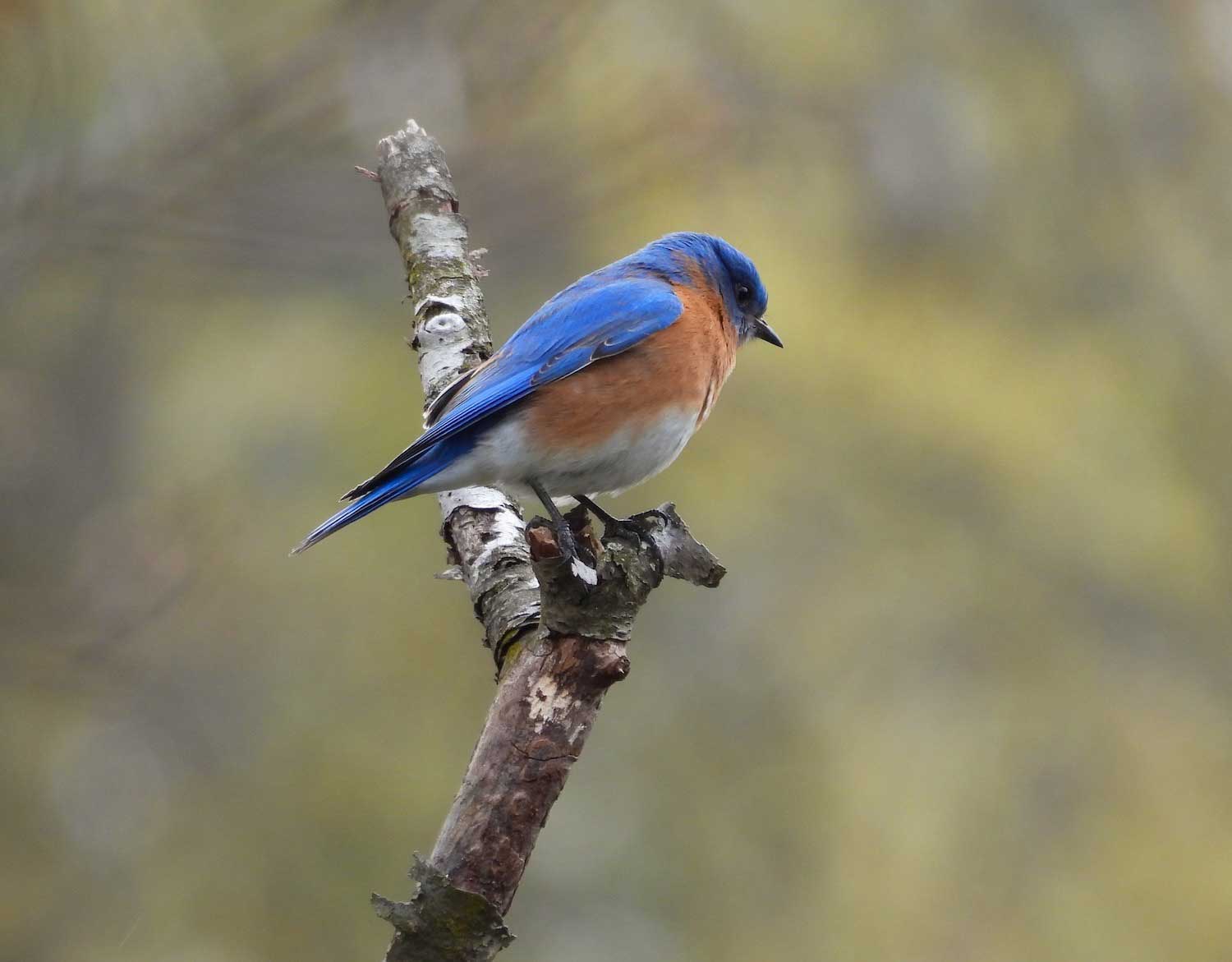Bluebirds are back from the brink thanks to human interventions

Eastern bluebirds today are commonplace in the country and even in our parks and yards, but there was a time when these bright little birds were an increasingly rare sight across their range, which covers the eastern United States.
The story of the eastern bluebird is not exactly unique. Many other birds have been saved from the brink of extinction thanks to successful conservation efforts — the bald eagle and the great egret to name just two well-known examples. The plight of the eastern bluebird is different, though, because of how a perfect storm of conditions put these birds at the precipice.
Bald eagles and other birds suffered serious population declines beginning in the mid-20th century because of the use of the chemical DDT, and great egrets faced extinction because their long, delicate feathers were highly sought after in the fashion industry in the late 19th century and early 20th century. In the case of the eastern bluebird, however, the threats were many.
Starting in the late 19th century and continuing into the early 20th century, eastern bluebirds had to compete for territory and nesting sites with non-native species, according to the American Bird Conservancy. Land management practices also changed in the 20th century, with many dead trees — called snags — removed from lands that were populated by bluebirds. The removal of the trees resulted in fewer nesting spots for the birds. In addition, pesticide use became more common and widespread. Even the prevalence of domesticated cats outside and changes in the weather contributed to their decline.
The most significant factor in the bluebird's population decline was the introduction of European starlings and house sparrows in the United States, according to the Northern Virginia Soil and Water Conservation District. As these non-native birds became more common and widespread, they overtook some of the nesting spots bluebirds would have used, eventually decimating the population.
All three species — the bluebirds, starlings and sparrows — are cavity nesters, but eastern bluebirds are secondary cavity nesters, which means they are unable to create their own tree cavities and instead rely on abandoned cavities created by other birds, like woodpeckers, the American Bird Conservancy reports. Starlings and sparrows are more aggressive than the bluebirds, however, so they quickly began to outcompete the bluebirds for these sought-after cavities, leaving them with fewer places to nest.
At its lowest point, the eastern bluebird population fell by nearly 90%, Wild Birds Unlimited reports. Their population began to turn a corner in the 1960s and 1970s with the advent of conservation practices that eliminated some of the competition they were experiencing from non-native house sparrows and European starlings.
The North American Bluebird Society was formed in 1978 after the realization that the bird was facing a precipitous population decline. The society advocated for the creation of bluebird trails and installation of bluebird nesting boxes. The nesting boxes were designed with an entrance hole too small for starlings to use, which helped eliminate some of the competition for nesting spots.
The Forest Preserve District has aided in the conservation efforts at Goodenow Grove Nature Preserve, where 50 bluebirds boxes have been installed along three bluebird trails. The trails were established decades ago, and today the boxes are monitored through a volunteer program.
It's not only bluebirds that use the nesting boxes. Tree swallows and house wrens nest in them too, so it's not unusual to see those species at Goodenow Grove as well.
The creation of bluebird trails and installation of bluebird boxes allowed the bird's population to slowly rebound across its range, with the population increasing between 1966 and 2019. Today, the eastern bluebird is considered a species of low conservation concern, according to the Cornell Lab of Ornithology. Bluebirds are common in open areas like pastures, fields, parks, golf courses and even sometimes backyards.
Bluebirds are mainly insectivores, eating a variety of insects that they snatch off the ground. In the fall and winter they switch their diet to mainly fruit, according to the Cornell Lab. Because they aren't seed eaters, they aren't frequent visitors to backyard bird feeders. However, you may be able to attract them to your yard by installing a bluebird box if your yard includes the right kind of habitat. The North American Bluebird Society offers a fact sheet on its website with information on proper specifications for bluebird boxes and how to create bluebird trails.
